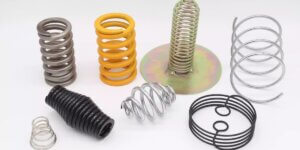When it comes to creating a positive impression on guests, every aspect of their experience matters, including the washroom facilities. A clean, well-maintained, and welcoming washroom contributes to guest satisfaction and reflects the attention to detail and hospitality of the establishment. In this blog post, we will provide tips for creating a welcoming and comfortable washroom experience for guests, ensuring they feel cared for and valued during their visit.
- Cleanliness as a Priority: Maintaining a clean washroom is paramount. Regularly clean and disinfect all surfaces, including sinks, countertops, toilets, urinals, mirrors, and floors. Pay attention to hidden areas like corners and grout lines. Empty and sanitize trash bins regularly to avoid unpleasant odors. Regular cleaning schedules and trained staff dedicated to washroom maintenance are essential to uphold cleanliness standards.
- Adequate Supplies: Ensure that the washroom is well-stocked with essential supplies at all times. Regularly check and refill items such as toilet paper, paper towels, hand soap, and hand sanitizers. Consider providing extra amenities like hand lotion, facial tissues, and air fresheners to enhance the comfort of guests. Clear signage indicating the location of supplies can also help guests easily find what they need.
- Hygiene Accessories: Offer hygiene accessories that promote cleanliness and convenience. Install touchless faucets, soap dispensers, and hand dryers to minimize contact and reduce the spread of germs. Provide trash bins with lids and foot-operated mechanisms for hands-free disposal. Offer disposable seat covers for added hygiene. These accessories demonstrate a commitment to guest well-being and convenience.
- Privacy and Comfort: Ensure guest privacy and comfort in the washroom. Install sturdy and well-maintained doors and locks to provide a secure and private space. Properly maintained ventilation systems prevent odors and maintain air quality. Consider providing soft lighting and soothing background music to create a calming atmosphere. Comfortable seating areas or benches can also be a welcome addition if space permits.
- Thoughtful Design and Décor: Pay attention to the design and décor of the washroom to create a pleasant ambiance. Choose colors and materials that evoke cleanliness and tranquility. Use high-quality fixtures and finishes that are both functional and visually appealing. Incorporate tasteful artwork or wall décor that complements the overall theme of the establishment. Plants or fresh flowers can add a touch of nature and freshness.
- Regular Inspections and Maintenance: Regularly inspect the washroom facilities to address any maintenance or repair needs promptly. Check for leaks, faulty fixtures, or malfunctioning equipment. Ensure proper functioning of toilets, faucets, hand dryers, and other amenities. Conduct routine inspections to identify any potential cleanliness or maintenance issues and take corrective actions swiftly. If you are looking for these services Bathroom cleaning services noida , Washroom cleaning services then helperji is the best service provider in the delhi ncr.
- Feedback and Continuous Improvement: Encourage guest feedback on the washroom facilities. Provide convenient feedback channels such as suggestion boxes or online platforms. Actively listen to guest comments and address any concerns promptly. Use feedback as an opportunity for continuous improvement to enhance the washroom experience for future guests.
Conclusion: Creating a welcoming and comfortable washroom experience for guests is an important aspect of hospitality. By prioritizing cleanliness, maintaining adequate supplies, offering hygiene accessories, ensuring privacy and comfort, incorporating thoughtful design, conducting regular inspections, and seeking guest feedback, businesses can provide a memorable washroom experience that reflects their commitment to guest satisfaction. A positive washroom experience contributes to overall guest satisfaction and leaves a lasting impression of quality and care.
Proper Disposal of Washroom Waste: Ensuring Hygienic and Environmentally-Friendly Practices
Introduction:
Proper waste disposal in washrooms is crucial for maintaining hygiene, preventing the spread of diseases, and promoting environmental sustainability. From sanitary products to paper towels, knowing how to handle and dispose of different types of waste is essential. In this blog post, we will explore the importance of proper waste management in washrooms and provide guidelines for the safe and environmentally-friendly disposal of various waste materials.
Understanding Washroom Waste:
a) Sanitary Products: Disposable sanitary products, such as tampons and pads, should never be flushed down the toilet. They can cause blockages in the plumbing system and harm the environment. Provide clearly labeled and accessible sanitary waste bins in washrooms for the proper disposal of these items.
b) Paper Towels: Paper towels used for hand drying should be disposed of in designated waste bins. Avoid throwing them into the toilet as they can lead to clogging issues. Encourage the use of electric hand dryers or reusable hand towels to reduce paper waste.
c) Disposable Gloves and PPE: Disposable gloves and other personal protective equipment used during cleaning tasks should be discarded in properly labeled waste bins. Follow any specific guidelines or regulations regarding the disposal of PPE.
d) Empty Containers: Empty containers of cleaning chemicals, soaps, and other washroom products should be recycled whenever possible. Rinse out the containers to remove any residue before recycling them. Check local recycling guidelines for specific instructions.
Proper Waste Bin Placement and Signage:
a) Strategic Placement: Position waste bins in easily accessible locations within the washroom to encourage users to dispose of waste properly. Place them near toilet stalls, sinks, and hand drying areas to minimize littering and promote convenience.
b) Clear Signage: Display clear and informative signage to guide users on proper waste disposal practices. Use visual cues and language that is easy to understand. Signs should indicate the types of waste that should be disposed of in specific bins and remind users not to flush certain items down the toilet.
Hygienic Waste Bin Maintenance:
a) Regular Emptying: Empty waste bins frequently to prevent overflow and unpleasant odors. Establish a regular schedule for waste bin maintenance to ensure cleanliness and hygiene.
b) Double-Bagging: Consider double-bagging waste bins to minimize leaks and potential contamination. Place a new bag at the bottom of the bin before inserting the liner to simplify the replacement process.
c) Disinfection: Clean and disinfect waste bins regularly to minimize bacterial growth and unpleasant odors. Use appropriate cleaning solutions and follow safety guidelines to ensure the well-being of cleaning staff.
Waste Segregation and Recycling:
a) Separation of Recyclables: Introduce separate waste bins for recyclable items such as paper, plastic, and glass within the washroom. Promote recycling practices by educating users about the importance of waste segregation.
b) Biohazardous Waste: If your washroom generates biohazardous waste, such as used needles or medical supplies, ensure proper disposal according to local regulations and guidelines. Consult with relevant authorities or waste management services to determine the appropriate disposal methods.
Educating Users :
Educating washroom users about proper waste disposal practices is crucial for maintaining cleanliness and hygiene. Use signage, posters, and educational materials to raise awareness about waste management. Emphasize the environmental impact of improper waste disposal and encourage users to adopt responsible habits.







